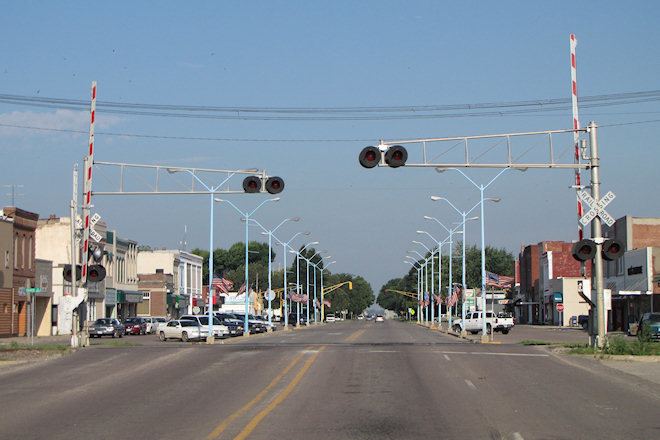Country USA FIPS code 19-59115 Area 13.44 km² Zip code 51040 Local time Friday 1:25 PM | Time zone Central (CST) (UTC-6) GNIS feature ID 0459865 Elevation 320 m Population 2,937 (2013) Area code 712 | |
 | ||
Weather 5°C, Wind N at 27 km/h, 93% Humidity | ||
Onawa iowa
Onawa is a city in Monona County, Iowa, United States. The population was 2,998 at the 2010 census. It is the county seat of Monona County. It is the largest town on the Iowa side of the Missouri River between Council Bluffs and Sioux City.
Contents
- Onawa iowa
- Map of Onawa IA 51040 USA
- 1315 diamond street onawa iowa 39 900 00
- History
- Geography
- 2010 census
- 2000 census
- Culture
- Notable people
- References
Map of Onawa, IA 51040, USA
1315 diamond street onawa iowa 39 900 00
History
Onawa was named for a character mentioned in the poem The Song of Hiawatha by Henry Wadsworth Longfellow. Onawa was platted in 1857, and the railway arrived to the city in 1867.
Onawa was the site of a POW camp for captured German soldiers, between 1944 and 1946. Historical documents indicate there were never more than 50 POWs in camp. A larger camp existed near the central Iowa town of Algona, and housed as many as 5,400 German POWs.
Geography
Onawa's longitude and latitude coordinates
in decimal form are 42.027490, -96.096513. According to the United States Census Bureau, the city has a total area of 5.19 square miles (13.44 km2), all of it land.
Onawa is located in the Loess Hills region of western Iowa, a unique geological and environmental area. Nearby are such natural areas as Lewis & Clark State Park, Preparation Canyon State Park and the Loess Hills State Forest.
2010 census
As of the census of 2010, there were 2,998 people, 1,345 households, and 756 families residing in the city. The population density was 577.6 inhabitants per square mile (223.0/km2). There were 1,519 housing units at an average density of 292.7 per square mile (113.0/km2). The racial makeup of the city was 96.4% White, 0.4% African American, 1.7% Native American, 0.3% Asian, 0.1% from other races, and 1.0% from two or more races. Hispanic or Latino of any race were 1.2% of the population.
There were 1,345 households of which 25.8% had children under the age of 18 living with them, 41.6% were married couples living together, 9.7% had a female householder with no husband present, 4.9% had a male householder with no wife present, and 43.8% were non-families. 38.9% of all households were made up of individuals and 20.9% had someone living alone who was 65 years of age or older. The average household size was 2.18 and the average family size was 2.91.
The median age in the city was 44.8 years. 23.2% of residents were under the age of 18; 6.2% were between the ages of 18 and 24; 20.8% were from 25 to 44; 25.8% were from 45 to 64; and 24% were 65 years of age or older. The gender makeup of the city was 47.5% male and 52.5% female.
2000 census
As of the census of 2000, there were 3,091 people, 1,329 households, and 796 families residing in the city. The population density was 629.1 people per square mile (243.1/km²). There were 1,452 housing units at an average density of 295.5 per square mile (114.2/km²). The racial makeup of the city is 97.86% White, 0.03% African American, 1.16% Native American, 0.19% Asian, 0.03% Pacific Islander, 0.03% from other races, and 0.68% from two or more races. 1.07% of the population are Hispanic or Latino of any race.
There were 1,329 households out of which 25.4% had children under the age of 18 living with them, 47.3% were married couples living together, 9.4% had a female householder with no husband present, and 40.1% were non-families. 35.0% of all households were made up of individuals and 20.2% had someone living alone who was 65 years of age or older. The average household size was 2.25 and the average family size was 2.89.
Population spread: 22.8% under the age of 18, 6.1% from 18 to 24, 24.4% from 25 to 44, 21.2% from 45 to 64, and 25.4% who were 65 years of age or older. The median age was 42 years. For every 100 females there were 88.1 males. For every 100 females age 18 and over, there were 83.2 males.
The median income for a household in the city was $34,796, and the median income for a family was $41,250. Males had a median income of $27,981 versus $20,292 for females. The per capita income for the city was $17,928. About 3.3% of families and 6.3% of the population were below the poverty line, including 4.9% of those under age 18 and 8.2% of those age 65 or over.
Culture
The Eskimo Pie was created in Onawa in 1920 by Chris Nelson, an ice cream shop owner.
